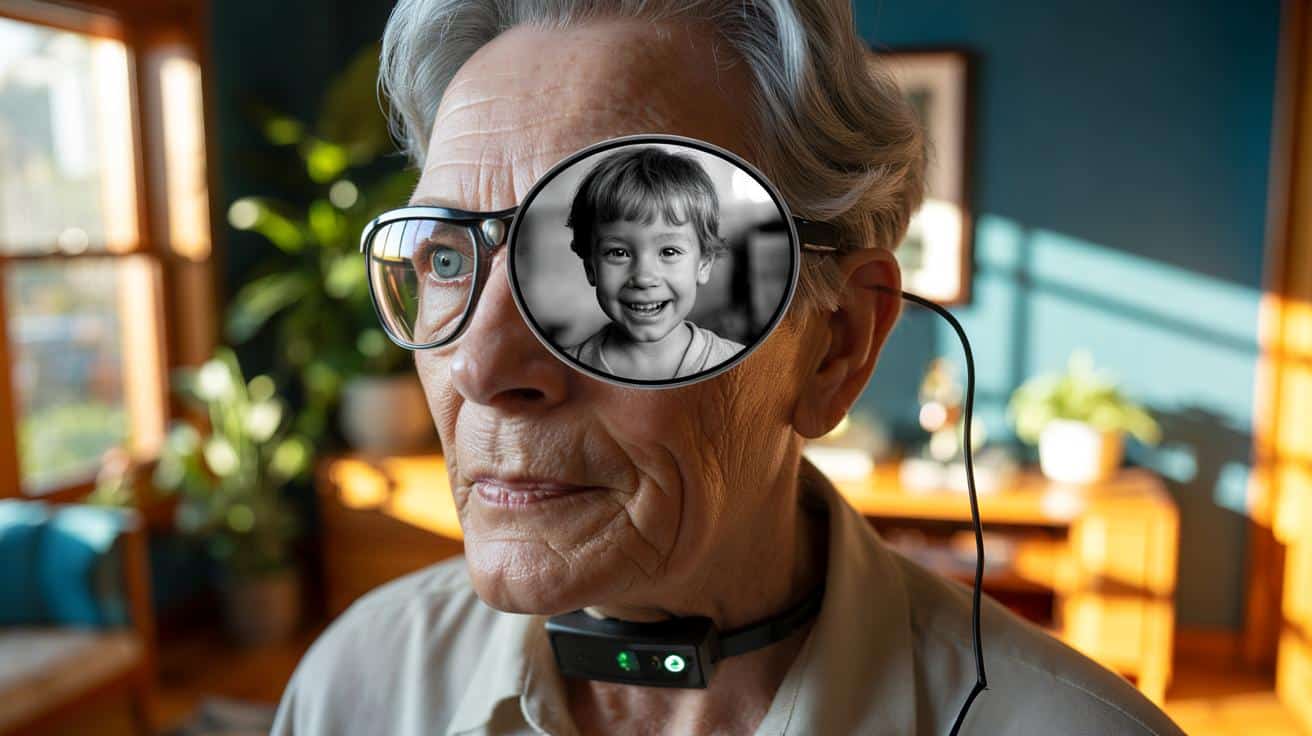Researchers reporting in the New England Journal of Medicine say they used an electronic retinal implant to restore partial vision in people with advanced dry age-related macular degeneration. The international team treated 38 participants across 17 European sites and tracked their progress over twelve months.
What the trial shows
The study enrolled 38 people with an average age close to 79, all living with advanced dry age-related macular degeneration (AMD). Surgeons placed an ultra-thin electronic implant beneath the central retina, then paired it with smart glasses and a belt-worn processor. After a year, four in five participants met the threshold for what clinicians call a clinically meaningful improvement in vision.
After 12 months, 80% of the 38 participants achieved clinically meaningful gains in sight, including practical day-to-day tasks.
Researchers ran the trial at 17 centres in five European countries, reflecting real-world clinical settings rather than a single specialist site. The results suggest a treatment pathway could be within reach for a condition that affects roughly 200 million people worldwide and often robs older adults of the ability to read, drive or recognise faces.
Specialists also point to what the trial did not include. The team did not use a randomised placebo group that received the glasses and training but no implant. That design might have separated gains from training motivation versus gains from the implant itself. Larger studies with control groups will answer that question.
Who could benefit
AMD comes in two main forms: wet and dry. Dry AMD is more common and can slowly erode central vision as photoreceptors fail. The participants in this study had dry AMD. They retained some photoreceptors, which allowed the implant to stimulate remaining cells and route signals to the brain.
| Type | Typical course | Current options | Implant relevance |
|---|---|---|---|
| Dry AMD | Gradual central vision loss | Monitoring, low-vision aids; research therapies | Primary target of this trial |
| Wet AMD | Faster loss due to abnormal vessels | Injections that target vessel growth | Not included in this study |
Age remains the strongest risk factor. Data cited by the researchers show around 2% of people aged 40–44 have signs of AMD, compared with about 42% in the late eighties and roughly 60% in the late nineties.
AMD risk rises steeply with age, turning a manageable blur at 70 into a disabling blind spot for many in their nineties.
How the bionic vision system works
The approach combines a sub-retinal chip with wearable technology and intensive rehabilitation. The tiny device sits beneath the central retina. It senses infrared light projected from camera-equipped glasses and converts that light into electrical impulses the brain can interpret as images. A small computer at the waist runs algorithms that translate the camera’s view into patterns the implant can deliver.
- Sub-retinal microchip placed under the macula
- Augmented reality glasses with a front-facing camera
- Belt-worn mini-computer processing the video feed
- Algorithms that convert scenes into stimulation patterns
- Structured training to relearn reading and navigation
The implant is roughly half the thickness of a human hair and sits under the central retina, where photoreceptors have failed.
Rehabilitation proved central to the gains. Participants trained for months to match new visual signals to familiar shapes, letters and faces. Clinicians reported improvements in reading ability and practical navigation, reflecting the brain’s flexibility when given consistent stimulation.
What patients saw—and what they still miss
Vision returned in black and white. For many participants, that shift from darkness to shades of grey enabled reading larger fonts and finding edges more confidently. Teams now aim to deepen grey-scale contrast and refine the software to make face recognition more reliable, a common request from patients.
Resolution remains limited. Engineers plan firmware and hardware upgrades to pack more detail into each frame without overloading the remaining retinal circuitry. Early laboratory work in animals suggests the approach can scale, but clinicians will need human data before expanding indications.
Patients regained usable black-and-white vision; engineers now target richer grey scales and sharper detail for reading and faces.
Safety, surgery and access
Retinal surgery carries risks, including infection, inflammation and retinal detachment. Centres in the trial followed tight surgical protocols and monitored patients closely. Durability also matters: teams will track performance beyond one year to see how stable the improvements remain and whether the implant or software needs regular updates.
Access will depend on regulatory review, reimbursement decisions and training for surgeons and low-vision specialists. The multi-country trial offers a template for rollout, but health systems will weigh long-term benefits against cost, clinic time and rehabilitation needs.
Key numbers at a glance
- 38 participants with advanced dry AMD; average age about 79
- 17 clinical sites across five European countries
- 80% reached clinically meaningful improvement at 12 months
- About 200 million people globally live with AMD
- Risk climbs to around 42% in the late eighties and about 60% in the late nineties
What this could mean for you or a loved one
For families frustrated by magnifiers and task lights that no longer help, the prospect of a device-guided pathway is powerful. Even modest gains—finding a bus number, reading a recipe, seeing a grandchild’s expression—change daily life. That said, the system asks for commitment: surgery, weeks of adjustment, and months of training to make sense of new signals.
People living with dry AMD who still have some peripheral vision may be good candidates in future programmes. Clinicians will look for overall eye health, the state of the retina, and willingness to train intensively. A frank discussion helps set expectations: the goal is functional sight, not a return to perfect acuity.
Practical steps while next trials run
- Schedule regular eye checks if you are over 60 or notice central blur or distortions.
- Ask about low-vision rehabilitation, including contrast training and reading strategies.
- Discuss smoking cessation and nutrition, which can influence AMD progression risk.
- Record the tasks you most want to reclaim; this guides rehabilitation goals if you join a study.
- Note medication lists and other eye conditions, which affect surgical planning.
The road ahead for the implant
The research group includes ophthalmologists and engineers from leading centres in London, Pittsburgh and Stanford. They plan software refinements to improve grey-scale handling and face recognition, plus hardware steps aimed at higher resolution. Future trials with randomised control groups will test the true effect size and define who benefits most. If results hold, clinics could add an implant-and-training pathway alongside existing care, giving people with dry AMD a new option that supports independence.









Incredible—80% saw meaningful gains? If this helps my dad read bus numbers again, sign us up! 🙂 How soon could US clinics offer trials?